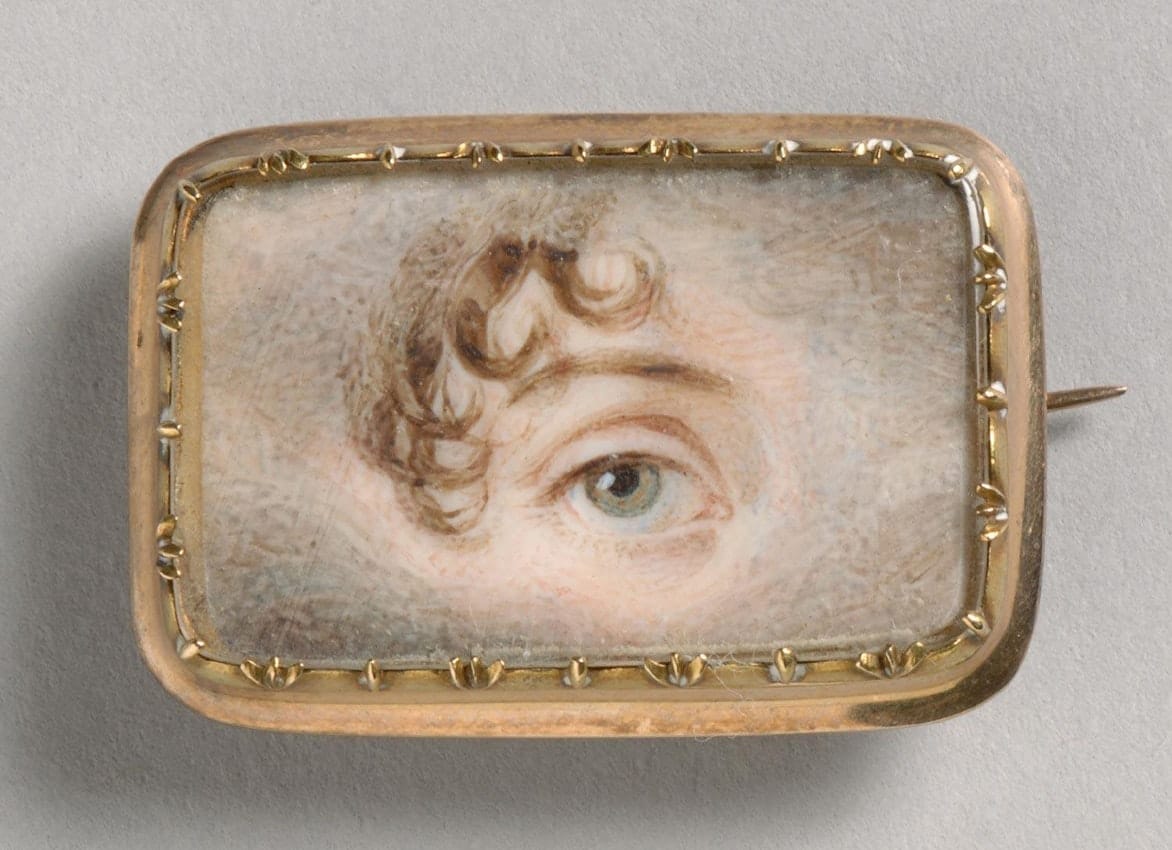"...here’s my eye to prove it"

Eye miniatures: an absurd, delightful niche-within-a-niche. They're hyper-specific, but they also appeal to timeless sentiments, which makes me wonder if this is a trend just waiting for the right cultural moment to reemerge...
"One scholar suggests that it was artists’ boredom that led to the fad for isolated eyes, but the more compelling explanation is their clients’ erotic whimsy. A disembodied eye is only identifiable to an intimate, making it an unusually private kind of token, the exchange of which would have been amenable to couples whose understandings were necessarily secret, and also, perhaps, to couples whose understandings weren’t secret, but who appreciated the sexual frisson of code talk."
More:
- If you'd like to browse a larger collection of disembodied eyes, check out the online collection of the Philadelphia Museum of Art.
- You can also find a collection of miniature portraits at the Gibbes Museum of Art.
VIDEO: 18th century embroidery is NO JOKE. (Trust me, we tried it.)
This exploration of embroidery combines 18th century designs, 21st century mechanical techniques, and the skills of three contemporary tailors to create a beautiful modern take on a garment that has been around, in one style or another, for centuries.
"...even automatic embroidery relies on the human brain to guide it, to set it up and make sure it's running smoothly. There's such a human energy breathed across this entire process. ...from the pattern drawers, to the embroiders, to the suppliers, to the tailors making it up, this project passed through so many hands and so many areas of expertise to make it come to life."
More:
- For more historical examples of best and waistcoasts from different regions and eras, you can browse the MET's collection.
The Cult of the Imperfect
By Umberto Eco. Paris Review.
A delightful read by the late Umberto Eco that will have you reevaluating your relationship with works you may consider objectively "bad".
"It turns out that the horrible stylistic excesses are indeed "padding," but the padding has a structural value; like the graphite rods in nuclear reactors, it slows down the pace to make our expectations more excruciating, our predictions more reckless. Dumas’s novel is a machine that prolongs the agony, where what counts is not the quality of the death throes but their duration."